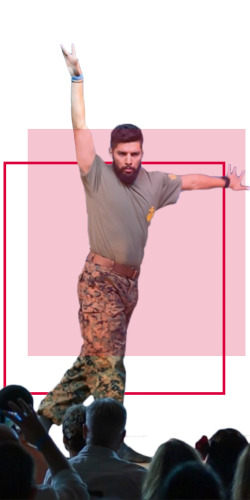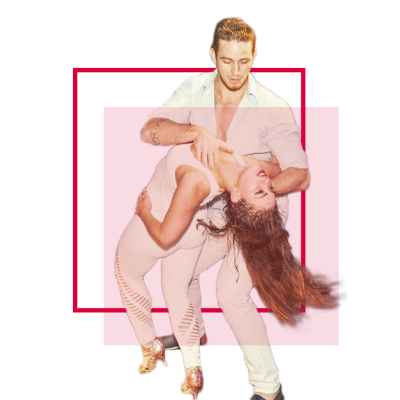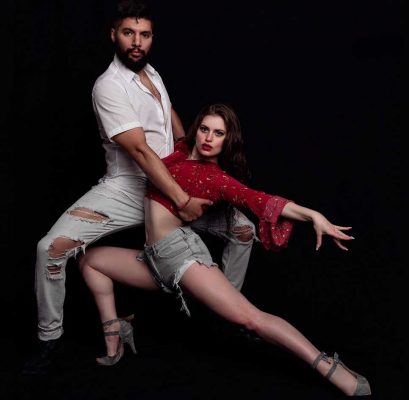Anastasia Maximilian

Anastasia is a former competitive figure skater from Boulder, Colorado. She discovered Salsa and other Latin dances while studying at the University of Colorado Boulder where she received a Bachelor of Fine Arts in Film Studies and a Minor in Dance.
Lamar Hernandez
Lamar found Latin Dancing overseas four years ago in Asia while being stationed in Okinawa, Japan for the US Military where he started taking classes, joined a performance team and took as many privates as he could with the local salsa/bachata instructor by the name of Erik Rodriguez the owner of Mamboki Dance Company. Even if he had to walk 40 minutes at times from his base to the dance studio Lamar would never miss a lesson. Lamar was exposed to the Asian Latin Dance Scene as he spent all the free time he could get from the military to attend and perform at festivals/congresses across Asia. Tokyo Salsa Congress, Formosa Dance Festival in Taiwan, Korea Bachata/ Salsa Congress, Kizombasa Afro Latin Festival in Thailand & Shanghai Bachata Festival.
Now he lives in Boulder Colorado where he has started teaching classes of Bachata Sensual with his partner Anastasia Maximilian and training in Brazilian Zouk.

Zouk & BACHATA
What is Brazilian Zouk?
Brazilian Zouk is a partner dance which began in Brazil during the early 1990s. Brazilian Zouk evolved from the partner dance known as the Lambada. As the Lambada music genre went out of fashion, Lambada dancers turned to Caribbean Zouk (from the francophone, Caribbean Islands) as their music of choice. It was this transition that birthed the dance known as Brazilian Zouk. The term “Brazilian Zouk” was adopted in order to distinguish the dance style from the musical genre “Caribbean Zouk”. Nowadays the term “Zouk” is commonly used to refer to the “Brazilian Zouk” dance style.


What is Sensual Bachata ?
The Sensual Bachata dance style was created in Cádiz, Andalusia, Spain, by Korke Escalona and Judith Cordero. Korke learned the basics of “traditional” in 1998, but with no more information than the basic step (four steps to the side) and inspired by bachata music, he started developing his own dance style inspired by contemporary and Brazilian zouk dances by understanding how the leader (traditionally a man) could lead the body of the follower (traditionally a lady) to interpret the music. The result is a novel, independent dance form with strict principles of leading and following, with mostly circular movements and body waves, but also body isolations and dips when the dancers feel the music calls for it.
